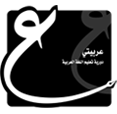الأسلوب اللغوي في سورة الفاتحة: دراسة لأنماط التعبير والوظائف البلاغية من منظور اللسانيات الحديثة
Keywords:
Stylistics, Surah Al-Fatihah, Rhetorical Function, Modern Linguistics, Expression PatternsAbstract
التعبير والوظائف البلاغية فيها. تعتمد الدراسة المنهج الوصفي التحليلي مع توظيف مقاربة أسلوبية لسانية حديثة لتحليل الأنماط الأسلوبية المميزة في السورة. يكشف التحليل عن بنى بلاغية متميزة تشمل أنماط التكرار، وبنية الطلب، واختيارات معجمية ذات قيمة دلالية عالية تخدم وظائف تواصلية محددة. تُظهر نتائج الدراسة كيف يمكن تفسير العناصر البلاغية الكلاسيكية في السورة بفعالية من خلال الأطر اللسانية الحديثة مثل وظائف اللغة عند جاكوبسون، ونظرية التماسك عند هاليداي، وتحليل الخطاب. حددت الدراسة الوظائف التعبيرية والمرجعية والإفهامية ضمن بنية السورة، إلى جانب الوظائف التفاعلية والتماسكية في تسلسل الآيات. تسهم هذه الدراسة في الدراسات الأسلوبية القرآنية من خلال الجمع بين مفاهيم البلاغة الكلاسيكية والمقاربات اللسانية المعاصرة، مما يقدم رؤى جديدة حول أنماط الخطاب المتعالي الموجود في سورة الفاتحة وأهميتها في التواصل الروحي الإسلاميReferences
A. Ghazali Salim. (2014). دراسة عن الإعجاز البلاغي في سورة الفاتحة. OKARA Jurnal Bahasa dan Sastra, 8(1), 45–56. https://doi.org/10.19105/ojbs.v8i1.455
Abalkheel, A., Sourani, M., & ElZohbi, S. (2025). Phonological Orchestration and Structural Unity: The Dual Role of the Fawasil. Forum for Linguistic Studies, 7(3), 597–610. https://doi.org/10.30564/fls.v7i3.8484
Abdullah, A. H., Adnan, A. A., Baru, R., & Zahari, A. A. I. C. (2016). Principles of Islamic management based on Surah al-Fatihah. Social Sciences (Pakistan), 11(22), 5467–5476. https://doi.org/10.3923/sscience.2016.5467.5476
Abubkr, L. O., Al Kaabi, M. H., Almaamari, H., & Haidara, N. Bin. (2024). Stylistic Transformation Signals in Arabic Grammatical Discourse: A Grammatical-Rhetorical Approach. Journal of Ecohumanism, 3(8), 6341–6356. https://doi.org/10.62754/joe.v3i8.5236
Almunawar, A. W., Islamiyah, Setyawan, R., Salsabila Qatrunnada, Rendi Afrianto, & Muhammad Shun Fan’Ulum Fiy. (2024). Kaidah Mufrad dan Jama’ dalam Menafsirkan Al-Qur’an. Wahana Islamika: Jurnal Studi Keislaman, 10(2), 31–47. https://doi.org/10.61136/khtx0q35
Chilton, P., & Kopytowska, M. (2018). Religion, language, and the human mind. Dalam Religion, Language, and the Human Mind. https://doi.org/10.1093/oso/9780190636647.001.0001
Darlis, A., Sufyan, H., Manalu, S. R., Amin, M., & Ritonga, A. A. (2023). Konsep Pendidikan Tauhid yang Terkandung Dalam Surat Al-Fatihah. Jurnal Dirosah Islamiyah, 5(2), 441–453. https://doi.org/https:/doi.org/10.47467/jdi.v5i2.3021
Dhulkifli, M. L. (2020). Kontroversi Surat Al-Fatihah Dalam Pandangan ArthurJeffery. Al-Dzikra: Jurnal Studi Ilmu al-Qur’an dan al-Hadits, 13(2), 113–136. http://dx.doi.org/10.24042/al-dzikra.v13i2.3640
Faisal, M. (2022). KarakteristikCorakPenafsiranAl-Qur’andalamSuratAl-Fatihah Perspektif Tafsir Al-Azhar dan Tafsir Al-Misbah. AT-TURAS:JurnalStudiKeislaman, 9(2), 263–281.
Ibrahim, M., Usman, A. H., & Muhamed Ali, M. A. (2014). Qur’anic brevity and verbosity: What and how? Mediterranean Journal of Social Sciences, 5(20), 1939–1945. https://doi.org/10.5901/mjss.2014.v5n20p1939
Jassem, M. H., & Hamzah, A. H. (2022). Representation of Majesty of Godhead and Divinity Themes in the selected Quranic texts: A stylistic study. Res Militaris, 12(3), 546–552.
Khairuddin, K., Zaenal Abidin, & Khaerun Nisa Nuur. (2022). تحليل السياق على تنوع الجمع لمفرد واحد في القرآن الكريم / The Contextual Analysis on the Plural Variations of One Singular in the Qur’an al-Karim Karim. Diwan : Jurnal Bahasa dan Sastra Arab, 8(1). https://doi.org/10.24252/diwan.v8i1.28731
Malik, N. H. A. (2024). Grounding the Content of the Qur’an Surah Al-Fatihah in Everyday Life as a Form of Living Religion. Jurnal Iman dan Spiritualitas, 4(4), 391–404. https://doi.org/10.15575/jis.v4i4.42566
Munawaroh, L. (2019). DISKURSUSSURATAL-FATIHAH(TelaahDalamPerspektifMaqashid). JurnalIlmiahIslamFutura, 17(2), 241. http://dx.doi.org/10.22373/jiif.v17i2.2433
Nabawiya, F. Z. (2022). Keindahan Bunyi Al-Qur’an: Kajian Fonologi Surah Al-Fatihah. AL ITQAN: Jurnal Studi Al-Qur’an, 8(1), 1–24. https://doi.org/10.47454/alitqan.v8i1.775 ejournal.staialanwar.ac.id
Nirwana A.N., A., Mahmudulhassan, M., Ali, M., Muthoifin, M., Waston, W., & Senathirajah, A. (2024). The Intersection of Quranic Studies and Modern Technology: A Bibliometric Analysis of Academic Publications from 2000 to 2024. Qubahan Academic Journal, 4, 178–190. https://doi.org/10.48161/qaj.v4n4a981
Nurdianto, T. (2018). ZAWAHIR AL-TAQDIM WA AL-TA’KHIR FI SURAH AL-FATIHAH: DIRASAH BALAGIYYAH. Indonesian Journal of Islamic Literature and Muslim Society, 2(2), 235–258. https://doi.org/10.22515/islimus.v2i2.1011
Othman, M. I. H., Abdelhamid, I. Y., Mohammad Nazmi, M. Z., & Abas, U.-H. B. (2023). The Linguistic and Semantic Coherence of Surah Al-Fatihah. International Journal of Academic Research in Business and Social Sciences, 13(6), Pages 480-488. https://doi.org/10.6007/IJARBSS/v13-i6/17444
Qassem, M. (2021). Translations of Stylistic Variations in the Noble Qur’an into English: Stylistic and Exegetical Perspectives. Journal of Intercultural Communication Research, 50(3), 304–322. https://doi.org/10.1080/17475759.2020.1841016
Saputri, D., Aisyah, N. L., & Indriani, W. (2024). Perbandingan Gaya Bahasa dalam Terjemahan Surah Al-Fatihah oleh K.H. Abdullah Syafii Maarif dan M. Quraish Shihab. Islamic Education, 3(1).
Schneider, J. K., Abdullahi, S. G., Easton, S. D., & Willis, D. G. (2023). Mantram repetition and psychological distress: A systematic review and meta-analysis. Journal of Psychiatric and Mental Health Nursing, 30(3), 389–397. https://doi.org/10.1111/jpm.12886
Shah-Kazemi, R. (2014). Spiritual Quest: Reflections on Quranic Prayer According to the Teachings of Imam Ali. Dalam Spiritual Quest: Reflections on Quranic Prayer According to the Teachings of Imam Ali.
Siregar, Fahmi. (2019). Analisis Gaya Bahasa Terjemahan Surah Al-Fatihah dalam Beberapa Versi Terjemahan Al-Qur’an. Jurnal Studi Bahasa dan Sastra, 19(1), 45–57.
Suri, N., & Tanjung, M. (2025). Metaphor and Symbolism in the Language of the Quran: A Linguistic Study on the Concept of Tauhid (Analysis of Surah al-Fatihah). Pharos Journal of Theology, 106(1). https://doi.org/10.46222/pharosjot.106.3
Ummah,R.,HabibiMuhammad,D.,&Susandi, A. (2021). NILAI-NILAIPENDIDIKANISLAMDALAMSURATAL-FATIHAH. Risâlah,JurnalPendidikandanStudiIslam, 7(2), 172–183. https://doi.org/10.31943/jurnal_risalah.v7i2.190
Vorobyev, V. V., Fatkullina, F. G., & Saitbattalov, I. R. (2023). Linguoculturological aspect of biblical translations into Turkic languages (a case study of Bashkir and Tuvan); [Лингвокультурологический аспект библейского перевода на тюркские языки (на материале башкирского и тувинского)]. New Research of Tuva, 4, 61–69. https://doi.org/10.25178/nit.2023.4.4
رجب حجازی, أ. (2022). التَّعَالُقُ النَّصِّیُّ بین الفاتحةِ “أمّ الكِتابِ” وسُوَرِ القرآن. حولیة کلیة اللغة العربیة بجرجا, 26(3), 2725–2796. https://doi.org/10.21608/bfag.2022.165408.1171
Downloads
Published
Issue
Section
License
Copyright (c) 2025 Miqdarul Khoir Syarofit, Hanik Mahliatussikah, Ria Fauziah Salma (Author)

This work is licensed under a Creative Commons Attribution-NonCommercial-ShareAlike 4.0 International License.







